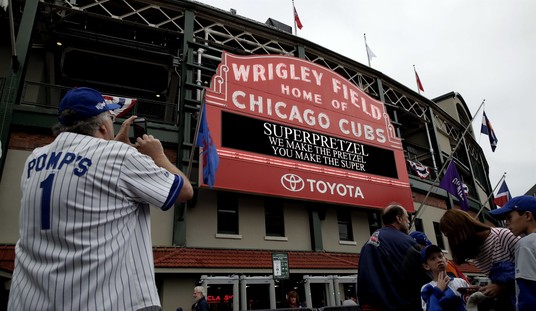This week marks the 30th anniversary of People’s Power Revolution in the Philippines that historians now regard as marking the start of the Color Revolutions that cumulatively crumbled the Soviet Union. The most astonishing aspect of the entire Color Revolution cycle was that it came largely as a surprise to pundits. As Leon Aron wrote in Foreign Policy, how and why they happened remains an enduring historical mystery. “In the years leading up to 1991, virtually no Western expert, scholar, official, or politician foresaw the impending collapse of the Soviet Union, and with it one-party dictatorship, the state-owned economy, and the Kremlin’s control over its domestic and Eastern European empires.”
Consider: the USSR’s vital signs gave no warning of failure. The Soviet Union in 1986 was as as big and populous as it had ever been. It had thousands of nuclear warheads. Its economy was bad it’s true but no worse than at many points in its past. There was no significant opposition to the Politburo. “After 20 years of relentless suppression of political opposition, virtually all the prominent dissidents had been imprisoned, exiled … forced to emigrate, or had died in camps and jails. There did not seem to be any other signs of a pre-revolutionary crisis.”
How could such a giant system, which withstood the onslaught of Nazi Germany itself, fail?
Flash back to 1986 before we knew what was then the future. The same things might have been said of Ferdinand Marcos and Nikolae Ceaușescu (about more later) in 1989. They were outwardly strong yet both were doomed. Their regimes would collapse like a house of cards in ways we are still struggling to understand. One of the theories (hat tip commenter Edie_VA) put forward to explain the implosions was preference falsification.
In his book Private Truth, Public Lies, social scientist Timur Kuran argued that people, under pressure to conform by culture leaders, often told public lies to get the pollsters and thought police off their backs, even as they nurtured largely undetected private resentments inside them. Over time, two divergent perceptions would emerge: the public lie would determine how the regime thought about itself while the private truth contained the real, but hidden data.
These two contradictory perceptions can coexist for as long as they don’t meet, living in a kind of superposition much like Schrodinger’s Cat. But eventually some event occurs which makes the public aware of the private truth which is really what everybody is thinking. That observation collapses the political wave function and causes all hell to break loose. Perhaps the clearest and most dramatic example of such a cascade was Nicolae Ceaușescu’s final speech on December 21, 1989. When the speech started, Ceaușescu appeared to be in total control. By the end of it, he was literally running for his life.
In the wake of growing tension over an uprising in Timișoara in which thousands were reportedly killed, Ceaușescu decided to give a nationally televised speech …
Thousands of workers were bussed into the square under threat of being fired. They were given red flags, banners and large pictures of Ceaușescu and his wife. … The crowd, now totaling up to 80,000, were given orders on where to stand, when to applaud and what to sing. The front rows of the assembly were made up of low-level Communist Party officials and members who acted as cheer-leaders. …
So far so good. Then it all fell apart. It was a fantastic reversal of fortune.
However, he had badly misread the crowd’s mood. … Eight minutes into the speech, some in the crowd actually began to scream because there was a shooting that occurred in the background. Workers from a Bucharest power plant started chanting “Ti-mi-șoa-ra! Ti-mi-șoa-ra!”—a chant that was soon picked up by others in the crowd. In response, Ceaușescu raised his right hand in hopes of silencing the crowd; his stunned expression remains one of the defining moments of the end of Communism in Eastern Europe. After many people began to exit the square, Ceaușescu shouted over the public address system for them to “remain seated”. He then tried to placate the crowd by offering to raise workers’ salaries by [the usual Romanian socialist pittance] … At that very moment, many everyday Romanians saw the weakness of Ceaușescu’s regime for the first time.
By the next day the rebellion had spread across the country and Nikolae and Elena Ceaușescu would be shot 3 days later still wearing the same overcoats they had donned on the occasion of their triumphant speech. In this incident the mystery of the Color Revolutions is reduced to its essentials. To the question: why couldn’t Ceaușescu or Marcos see it coming, the answer is: they only saw the public lie. The private truth remained hidden until some galvanizing event forced it to the surface.
It’s becoming evident that the European elites failed to understand how explosive the migrant issue was until it detonated full in their face. Now it is in the midst of a crisis which could literally bring down the European Union. Why didn’t they see it coming? Because they believed their own Narrative, even when they should have suspected it was a lie of their own making. If the PC Western elites are overtaken by a cascade similar to that which collapsed the Soviet Union, the ultimate irony will be that the very migrants which they had counted on to create the Curley Effect will turn out to be the engine of their own destruction.
They will have been hoisted on their own petard, or perhaps, more accurately, sentenced by their own Narrative. The most dangerous lie is the one which you tell others, then wind up believing yourself. For many years the Western political elites not only espoused the “public lie”, but made certain that anyone who refused to repeat it was pilloried by the thought police. Like the Soviets, they thought this solved the problem. But it only ensured that the spring would be wound — and wound past the breaking point — precisely where they could not see it strain.
Follow Wretchard on Twitter
Recently purchased by readers:
Torpedo: The Complete History of the World’s Most Revolutionary Naval Weapon, The torpedo was the greatest single game-changer in the history of naval warfare. This book is a broad-ranging international history of the weapon, tracing not only its origins and technical progress down to the present day, but also its massive impact on all subsequent naval wars. Heavily illustrated with photos and technical drawings.
Six Frigates: The Epic History of the Founding of the U.S. Navy, Before the ink was dry on the U.S. Constitution, the establishment of a permanent military became the most divisive issue facing the new government. This book by Ian W. Toll covers the fierce debates, the decision to build six heavy frigates, through the cliff-hanger campaign against Tripoli, to the war that shook the world in 1812.
The A.T. Guide Northbound 2016, The A.T. Guide is the guidebook of choice for hikes of any length on the Appalachian Trail. The book contains thousands of landmarks such as campsites, water sources, summits and gaps. The trail’s elevation profile is included and every landmark is aligned to the profile. Hikers using this guide know where they are on the trail, what views, streams and campsites are ahead, and whether they’ll be hiking uphill or downhill to get there.
Recommended:
Private Truths, Public Lies: The Social Consequences of Preference Falsification, Author Timur Kuran shows the huge social and political consequences of misrepresenting one’s wants under perceived social pressures.
Did you know that you can purchase some of these books and pamphlets by Richard Fernandez and share them with your friends? They will receive a link in their email and it will automatically give them access to a Kindle reader on their smartphone, computer or even as a web-readable document.
The War of the Words, Understanding the crisis of the early 21st century in terms of information corruption in the financial, security and political spheres
Rebranding Christianity, or why the truth shall make you free
The Three Conjectures, reflections on terrorism and the nuclear age
Storming the Castle, why government should get small
No Way In at Amazon Kindle. Fiction. A flight into peril, flashbacks to underground action.
Storm Over the South China Sea, how China is restarting history in the Pacific
Tip Jar or Subscribe or Unsubscribe to the Belmont Club









Join the conversation as a VIP Member